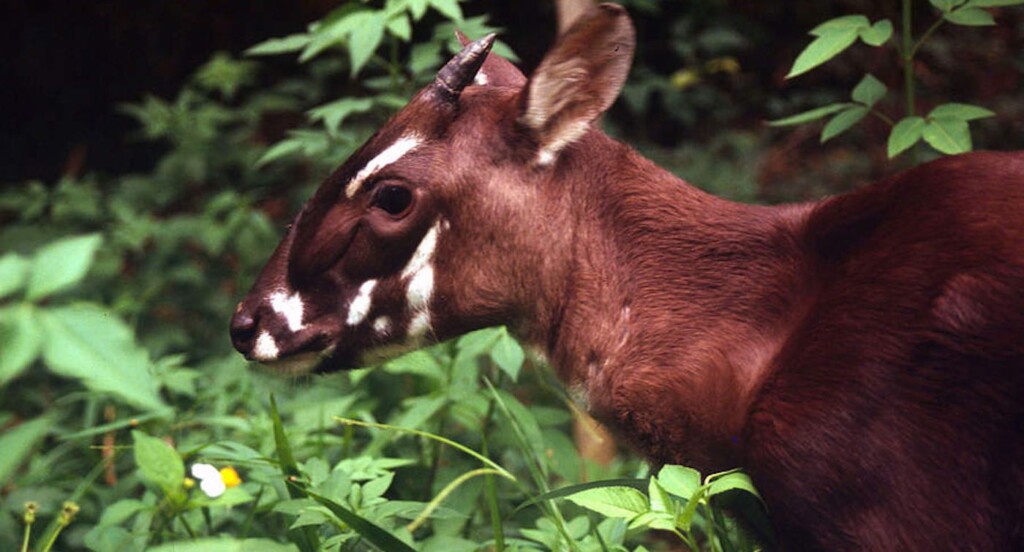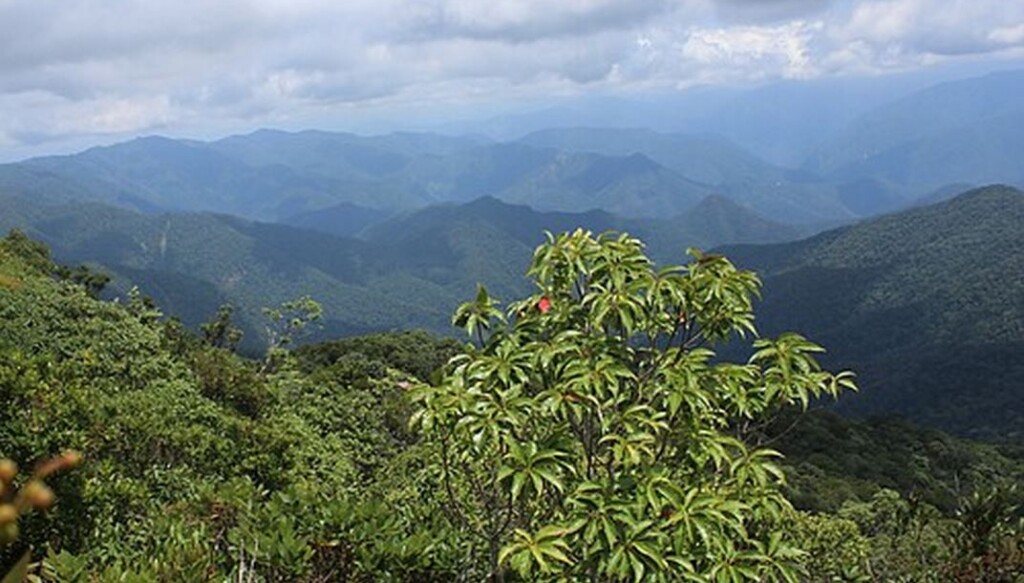 A Saola (or Vu quang ox, known as the Asian Unicorn) Pseudoryx nghetinhensis ©David HULSE / WWF
A Saola (or Vu quang ox, known as the Asian Unicorn) Pseudoryx nghetinhensis ©David HULSE / WWFThe government of Laos DPR recently turned a vast area of hills and tropical forests over to conservation with the establishment of Xesap National Park (NP).
Aided by Western endowments and nonprofits, the establishment expands an already existing protected area to a total of 202,300 hectares, including the 49,000-hectare Pale area, which is thought to be a significant and relatively undisturbed habitat for key species.
 courtesy of Pakham Outhanikone WWF-Laos
courtesy of Pakham Outhanikone WWF-LaosNestled in the Annamite mountain ranges, Xesap NP is a biodiversity hotspot, home to some of Asia’s most endangered species found nowhere else on the continent.
Notably, Xesap NP is also one of the few places in the Annamites where the legendary Saola—known as the ‘Asian Unicorn’—has been sighted, and is thought to have high potential as a site for population recovery.
The Saola was only identified in 1992 by a local ecologist. The first few that made it into captivity have died shortly thereafter, and the species is listed as Critically-Endangered on the IUCN Red List.
Lacking a single horn like the mythical creature that kindly lent its moniker to this relative of the oryx, the Saola’s two horns instead grow very close together, such that from a distance or from the side, it may appear to have only one long horn.
“We believe this designation marks a crucial step towards enhancing conservation efforts and ensuring the sustainable management of Xesap’s rich natural treasures. WWF-Laos applauds the Lao government for this significant achievement and remains dedicated to supporting the park’s management through our enduring partnership with the provinces of Salavan and Sekong,” said Loris Palentini, Country Director, WWF-Laos, in a statement.
Roaming in the shadow of the so-called unicorn are fascinating animals like the elusive Roosevelt’s muntjac, vibrant red-shanked douc, the rare Annamite striped rabbit, and the stunning crested argus. New species are discovered in the Annamites at an incredibly high rate, even many large mammal species described for the first time by science in the last century.
Spanning the provinces of Salavan and Sekong, with nearly 35 villages located in and around the park, Xesap NP is now one of seven NPs in Laos DPR. With its forested valleys, limestone karst hills, vertiginous mountains, and extremely rich biodiversity and endemism, Xesap’s redesignation as an NP from a National Protected Area is a well-deserved recognition of its ecological importance in the Greater Mekong, the statement read.
FROM SOUTHEAST ASIA: Camera Catches Sighting of a Tiger with Cubs for First Time in 10 Years, Raising Hopes for Species in Thailand
“This announcement represents a major step forward for conservation in Laos and a significant breakthrough in the global effort to reach the 30×30 target,” said Molly McUsic, President of the Wyss Foundation which supported the work to create the park.
“Xesap National Park is a shining example of the progress we can make toward preserving biodiversity and protecting precious natural resources when we bring together government, philanthropy, and local communities. We applaud the Lao Government, WWF-Laos, Rainforest Trust, and other partners for their collective efforts to permanently protect Xesap.”
ALSO CHECK OUT: Precious Rainforests Are Being Preserved at Highest Rate in 30 Years, After Palm Oil Moratorium in Indonesia
Following the designation of the area as an NP, and given its long history of working in Xesap, WWF-Laos aims to further strengthen its partnership with the Department of Forestry and the Provincial Agriculture and Forestry Offices of Salavan and Sekong provinces, as well as with districts and local communities. Key goals include enhancing park management and biodiversity protection, promoting resilience of local community development, and ensuring long-term conservation success that benefits both people and nature.
SHARE This Magnificent New Piece Of Protected Land With Your Friends…
Source link

